مكالمات السائق الخاصة بك - ميت Tuk Tuk الكهربائي ولن يبدأ. الآن مركبة خارجة عن الخدمة ، وتأخرت عمليات التسليم الخاصة بك ، وتفقد المال مع كل دقيقة تقع في وضع الخمول.
الأسباب الأكثر شيوعًا التي لن تبدأها Tuk Tuk هي بطارية ميتة أو اتصال كهربائي فضفاض أو فتيل مهب أو وحدة تحكم معيب. ابدأ تشخيصك بأبسط وأكثر مشكلة: البطارية.
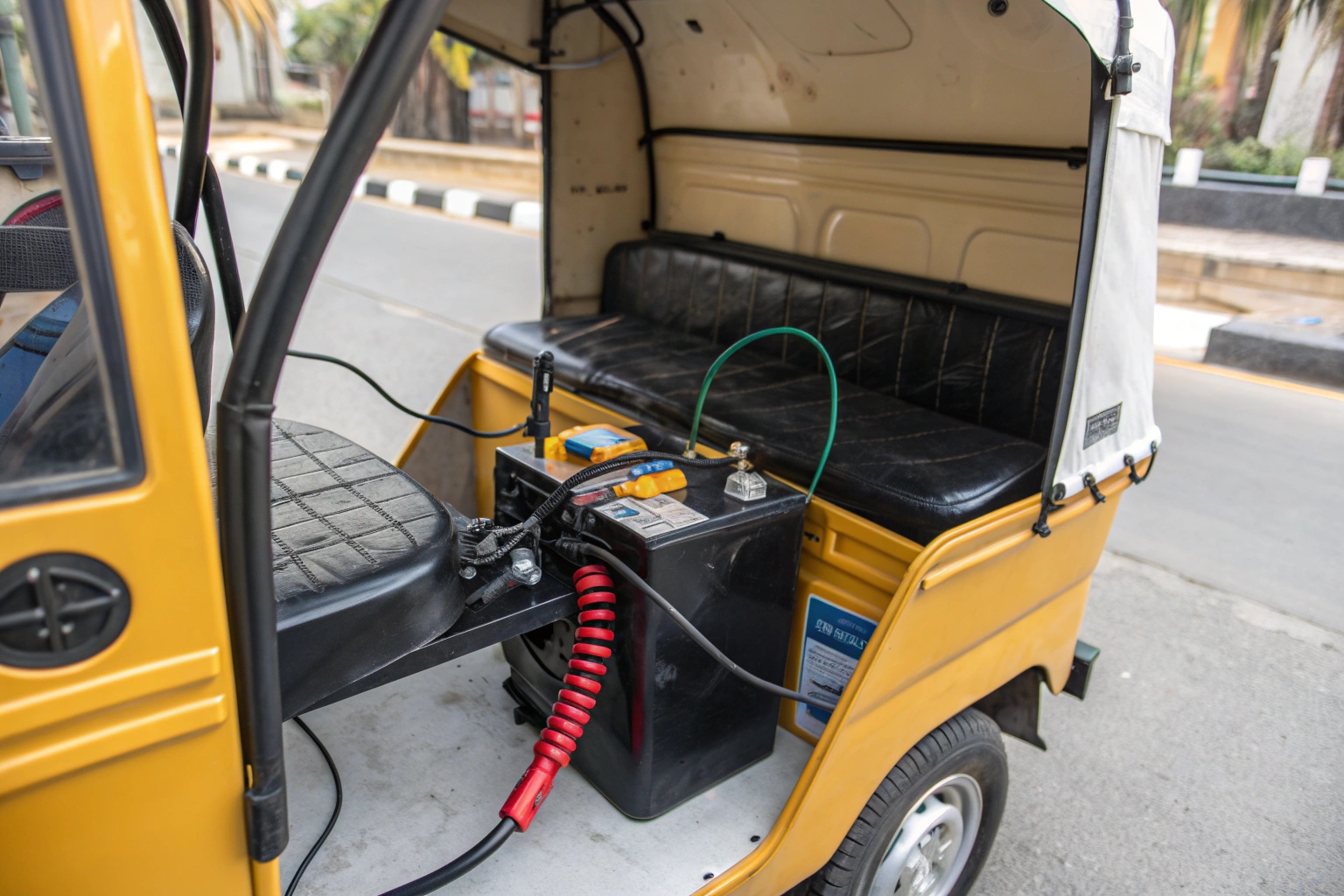
بصفته مصنعًا قام بشحن الآلاف من الدراجات الثلاثية الكهربائية على مستوى العالم ، فإن هذا هو سؤال الدعم الفني الأكثر شيوعًا الذي أتلقاه. يمكن أن تسبب مركبة غير مبتدئة الكثير من التوتر لمشغلي الأسطول ، ولكن الأخبار السارة هي أنه في معظم الوقت ، يكون الإصلاح بسيطًا للغاية. لا يتطلب فنيًا ذا مهرة للغاية. قبل الذعر ، يمكنك أنت أو سائقك اتباع تسلسل استكشاف الأخطاء وإصلاحها لتحديد المشكلة وغالبًا ما تحلها في دقائق. دعنا نسير في الخطوات التي أشاركها مع جميع عملائي.
ما هي الأسباب الأكثر شيوعًا التي لن تبدأها Tuk Tuk الكهربائية؟
يمكنك قلب المفتاح ، ولكن لا شيء يحدث - لا توجد أضواء داش ، لا صوت. أنت لا تعرف من أين تبدأ ، وفكر مشكلة كهربائية معقدة أمر محبط ومخيف.
البطارية الميتة أو المستنفدة هي السبب الأول ، حيث تمثل أكثر من 60 ٪ من الحالات. تشمل المشكلات الشائعة الأخرى محطات الأسلاك الفضفاضة ، أو الصمامات الرئيسية المتعثرة ، أو متشابك السلامة مثل مفتاح الفرامل الذي يتم إشراكه.
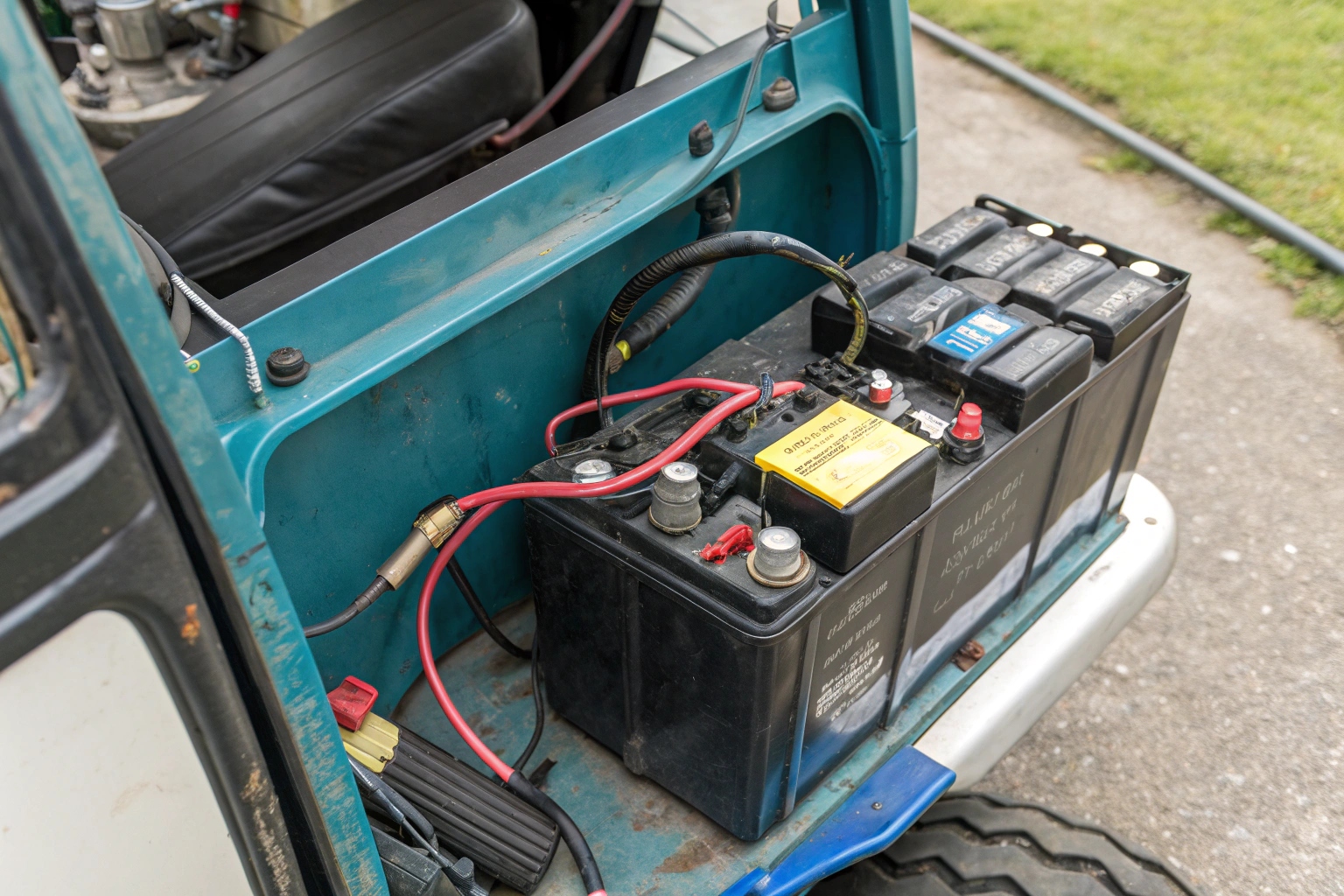
أطلب دائمًا من موكلي أن يفكروا كطبيب: ابدأ بالسبب الأكثر وضوحًا وشائعًا قبل البحث عن أمراض نادرة. لا تفترض أن المحرك مكسور. إنه دائمًا ما يكون شيئًا أبسط. نحن نبني هذه المركبات لتكون متينة ، ولكن الاهتزازات اليومية والاستخدام قد تسبب في بعض الأحيان مشكلات بسيطة. يمكن لتدريب برامج التشغيل الخاصة بك على التحقق من هذه الأشياء الأربعة أولاً أن يوفر لك الكثير من الوقت والمال على استدعاء الفنيين.
- بطارية ميتة: تفتقر البطارية إلى شحن كاف لتشغيل النظام.
- اتصالات فضفاضة: لقد انتهى السلك من البطارية أو وحدة التحكم أو المحرك.
- فتيل في مهب: فتيل فتيل أو لوحة القيادة الرئيسية قد انفجر ، مما أدى إلى قطع كل الطاقة.
- قفل السلامة: تمنع ميزة السلامة ، مثل مفتاح الاتجاه غير المحايد أو في زر إيقاف الطوارئ المعلقة ، بدء التشغيل.
كيف يمكنك اختبار ما إذا كانت البطارية هي المشكلة بسرعة؟
تشك في البطارية ، ولكن كيف يمكنك أن تكون متأكدًا؟ يمكن أن يقودك التخمين إلى إضاعة الوقت على أجزاء أخرى ، أو الأسوأ من ذلك استبدال حزمة بطارية جيدة تمامًا.
استخدم مقياس متعدد للتحقق من جهد حزمة البطارية. يجب أن يقرأ نظام بطارية 60 فولت بالكامل من 60 فولت (وأكثر من 57 فولت عندما يكون فارغًا تقريبًا). القراءة أقل بكثير من هذا تؤكد مشكلة القوة.
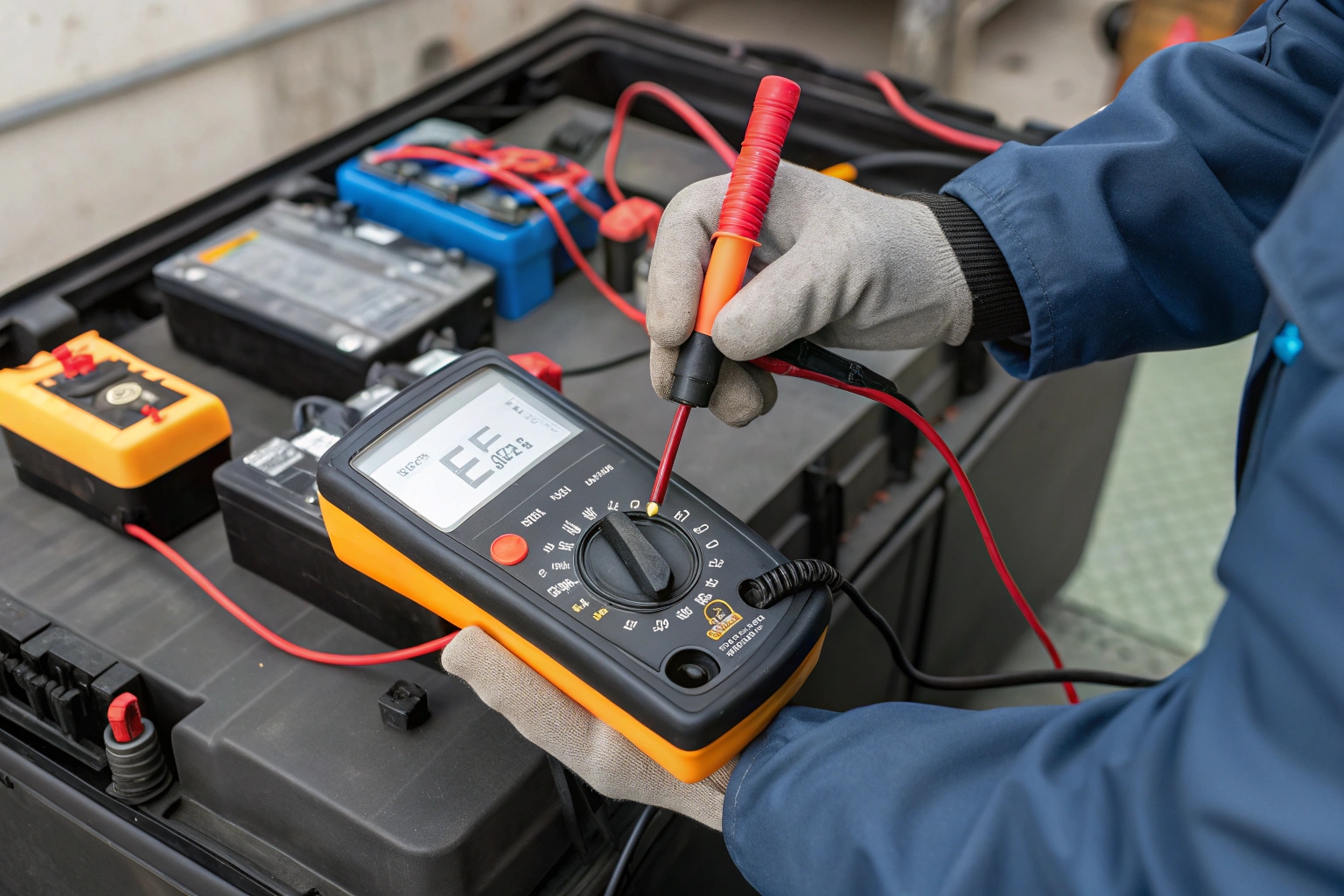
| هذه هي الخطوة التشخيصية الأكثر أهمية. أ متعددة هي أداة رخيصة وأساسية لأي مالك أسطول. استنادًا إلى بيانات المصنع لدينا ، يمكن أن تفقد بطاريات حمض الرصاص أكثر من 20 ٪ من طاقتها الفعالة كل عام تحت الاستخدام الكثيف. هذا يعني أن حزمة البطارية الأقدم قد تظهر شحنة كاملة ولكن بعد ذلك إسقاط الجهد على الفور تحت الحمل ، مما يمنع السيارة من البدء. هذا هو السبب عندما يسأل العملاء عن الموثوقية على المدى الطويل ، أوصي غالبًا بالترقية حزم بطارية الليثيوم. على الرغم من أن التكلفة المقدمة أعلى ، إلا أنها تحافظ على أداء الجهد لفترة أطول بكثير ولها عمر من ثلاثة إلى أربعة أضعاف من حمض الرصاص. إنه استثمار يدفعه الحد من هذه الأنواع الدقيقة من حالات فشل بدء التشغيل. | قراءة الجهد (نظام 60 فولت) | حالة البطارية | الإجراء الموصى به |
|---|---|---|---|
| > 60V | مشحونة | البطارية ليست المشكلة على الأرجح. | |
| 57 فولت - 60 فولت | مشحونة جزئيا | شحن البطارية بالكامل. | |
| < 57 فولت | مستنفدة أو تالفة | تهمة على الفور. إذا لم يحمل رسومًا ، فإنه يحتاج إلى استبدال. |
هل يمكن أن تمنع التوصيلات الكهربائية أو الصمامات Tuk Tuk من البداية؟
تُظهر البطارية شحنة كاملة ، لكن Tuk Tuk لا يزال ميتًا. أنت في حيرة من أمرك ، تعتقد أنه يجب أن يكون فشلًا كبيرًا ، عندما يكون مجرد فتيل من عشرة سنتات.
نعم ، بالتأكيد. يمكن لمحطة واحدة فضفاضة ، أو بقعة من التآكل ، أو الصمامات الرئيسية المنفوقة أن تقطع تمامًا تدفق الطاقة من البطارية إلى وحدة التحكم ، مما يجعل السيارة تبدو ميتة تمامًا.
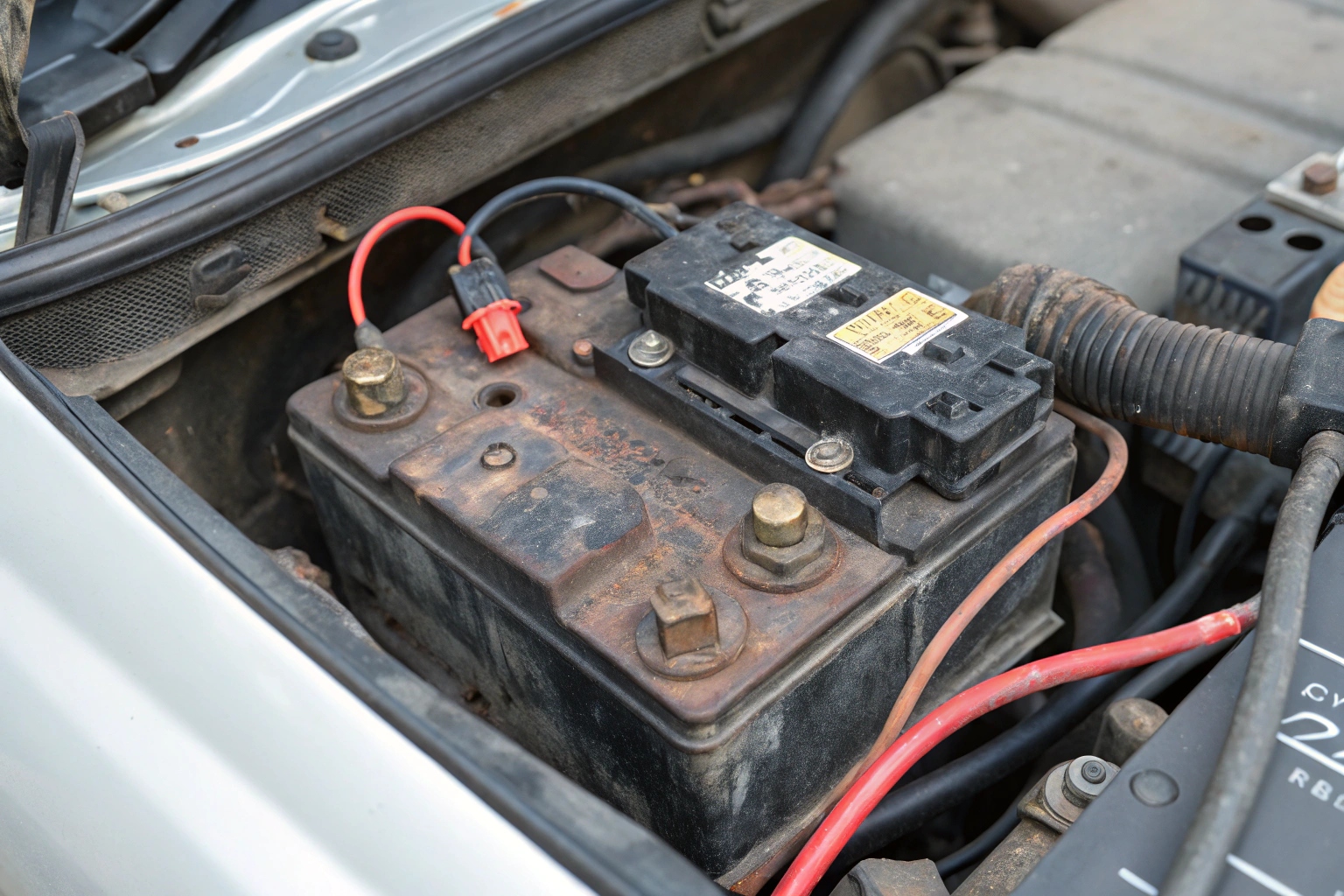
بعد التحقق من البطارية ، فإن الخطوة التالية هي تتبع مسار الطاقة. فكر في الأمر مثل خرطوم الحديقة: إذا كانت البطارية هي الصنبور ، فإن سلك فضفاض أو فتيل مهووس هو kink في خرطوم يوقف الماء. الاهتزازات من القيادة اليومية على الطرق الوعرة هي السبب الرئيسي لخسر الأسلاك. من تجربتي ، اتصالات الأسلاك الضعيفة حساب عدد مفاجئ من الأخطاء. نقوم بتجميع سياراتنا بعناية ، ولكن يجب أن يكون الفحص البصري السريع جزءًا من أي فحص روتيني. فيما يلي قائمة مراجعة بسيطة للسائقين أو الميكانيكي المحلي لمتابعة:
- مفتاح الطاقة الرئيسي: تحقق من مفتاح قطع الطاقة الرئيسي تحت المقعد. هل هو على؟ في بعض الأحيان يتم إيقاف تشغيله عن طريق الصدفة.
- أطراف البطارية: انظر إلى أطراف البطارية الرئيسية. هل هم ضيق وخالي من التآكل الأبيض أو الأخضر؟ إذا لم يكن الأمر كذلك ، افصلها ، وقم بتنظيفها بفرشاة سلكية ، وقم بإعادة الاتصال بحزم.
- صندوق الصمامات الرئيسي: حدد موقع الصمامات الرئيسية ، وعادة ما يكون بالقرب من البطارية. تحقق مما إذا كان قد انفجر. دائما تحمل قطع الغيار.
- موصل مفتاح التبديل: انظر تحت لوحة القيادة. هل تسخير الأسلاك متصل بحزم في الجزء الخلفي من مفتاح الإشعال الرئيسي؟
متى يجب أن تتصل بالفني للحصول على Tuk Tuk الكهربائي غير المبدئي؟
لقد قمت بفحص البطارية والصمامات والاتصالات ، لكن Tuk Tuk لا يزال لن يبدأ. قد يؤدي الاستمرار في التخمين إلى مزيد من الضرر ، ولا تزال سيارتك خارج المفوضية.
إذا فشلت الشيكات الأساسية ، أو إذا أظهرت لوحة القيادة رموز خطأ محددة ، فقد حان الوقت للاتصال بالفني. تتطلب الأعطال مع وحدة التحكم في المحرك ، أو مستشعر الخانق ، أو أسلاك المحرك الداخلية أدوات وخبرة مهنية.
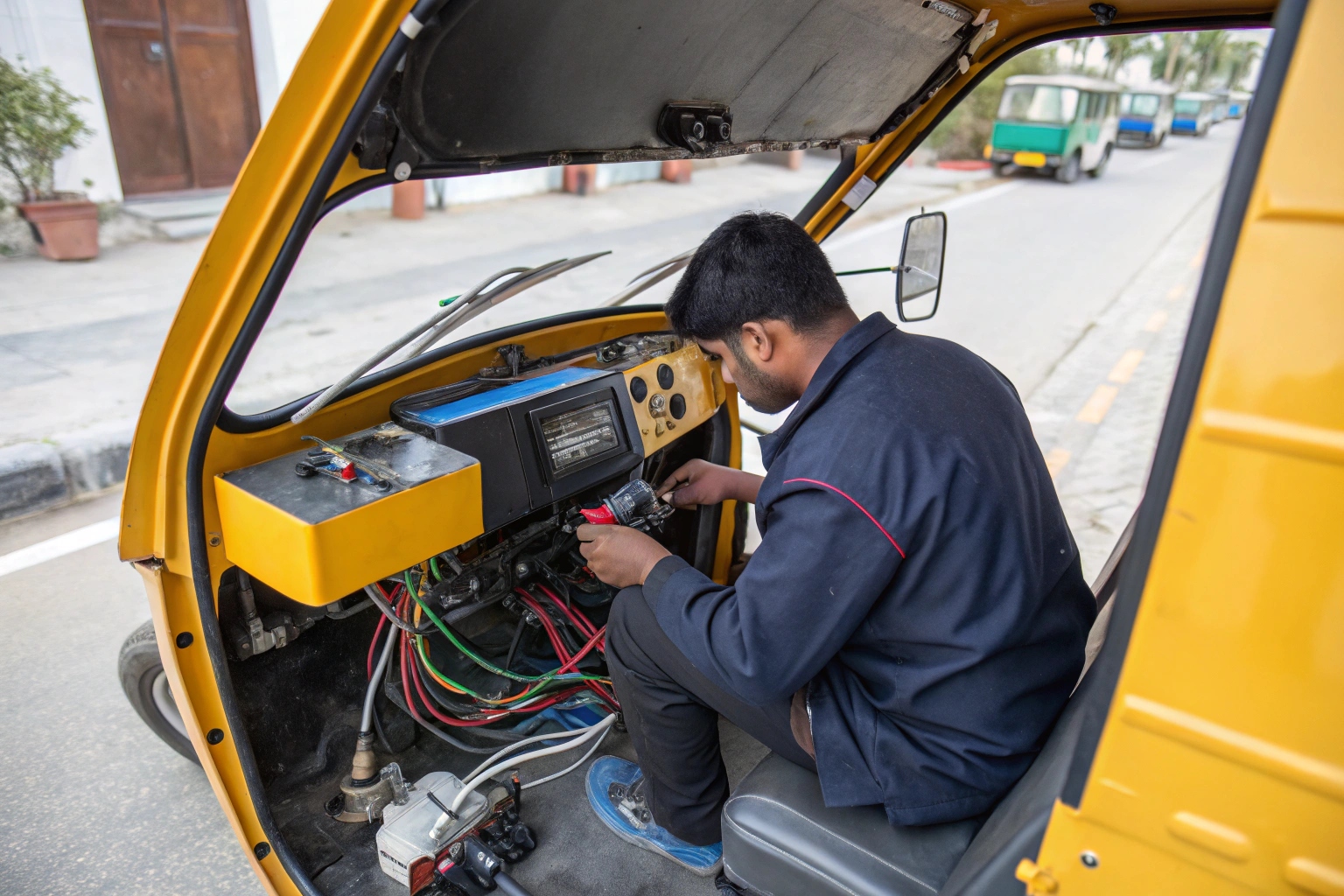
في حين أن معظم المشاكل بسيطة ، بعضها لا. ال تحكم المحرك is the "brain" of the tuk tuk, and if it fails, the vehicle will not start. Controller faults are less common, making up less than 10% of cases, but they do happen. If you've tried all the basic steps and the vehicle remains dead, or if the dashboard lights up with an unfamiliar error code (like "error 47" وهذا يمكن أن يعني أنك لم تبدأ في محايد) ، فقد حان الوقت للتوقف وطلب المساعدة. هذا هو المكان الذي يكون فيه وجود علاقة جيدة مع موردك أمرًا بالغ الأهمية. كشركة مصنعة ، نقدم دعمًا بعد البيع ويمكننا مساعدة فنيك المحلي على تشخيص رموز الخطأ. هذا أيضًا هو السبب في أنني أناقش دائمًا ملف اتفاق قطع الغيار مع عملائي B2B. إن وجود وحدة تحكم احتياطية ومستشعر خانق في متناول اليد لأسطول مكون من عشر مركبات أو أكثر هو استثمار ذكي يمكن أن يتحول أسبوعًا من التوقف إلى إصلاح لمدة ساعة واحدة.
خاتمة
عندما لا تبدأ Tuk Tuk الكهربائية ، ابدأ بالبطارية ، ثم تحقق من الصمامات والاتصالات. معظم المشكلات هي إصلاحات بسيطة ، ولكن بالنسبة لرموز الخطأ المعقدة أو فشل المكونات ، فإن المساعدة المهنية هي المفتاح.

